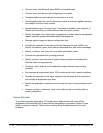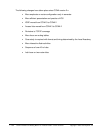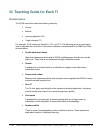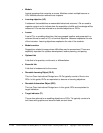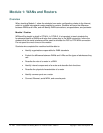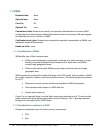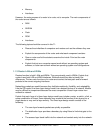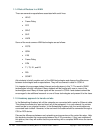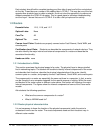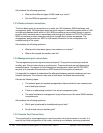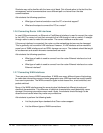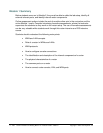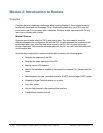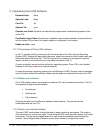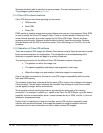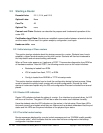
14 - 238 CCNA 2: Routers and Routing Basics v3.1 Instructor Guide – Module 1 Copyright © 2004, Cisco Systems, Inc.
Each student should build a complete topology and then take it apart and let the next student
do the lab. These labs are a review of the cabling labs in CCNA 1. This may be one of the last
opportunities students have to cable a network, so do not miss this opportunity to make sure
students complete the CCNA 2 Lab setup. This is a good place to introduce troubleshooting
and the Layer 1 issues that occur in CCNA 2. It is also a fairly simple and fun activity.
1.2 Routers
Essential Labs: 1.2.5, 1.2.6, and 1.2.7
Optional Labs: None
Core TIs: All
Optional TIs: none
Course- Level Claim: Students can properly connect router Fast Ethernet, Serial WAN, and
console ports.
Certification-Level Claim: Students can describe the components of network devices. They
can also identify the major internal and external components of a router and describe the
associated functionality.
Hands-on skills: none
1.2.1 Introduction to WANs
This section overviews the physical aspect of a router. The physical layer is always studied
first in networking topics. The student will be able to identify internal components of the router
and describe their functions, describe the physical characteristics of the router, identify
common ports on a router, and properly connect FastEthernet, Serial WAN, and console ports.
The components in a router are essentially the same as those in a computer. In fact, a router
can be thought of as a computer designed for the special purpose of routing. While the exact
architecture of the router varies in different router series, this section will introduce the major
internal components. The figures show the internal components of some of the Cisco router
models.
Ask students the following questions:
• What are the common components of a router?
• What is NVRAM used for?
1.2.2 Router physical characteristics
It is not necessary to know the location of the physical components inside the router to
understand how to use the router. The exact components used and their locations vary in
different router models.



